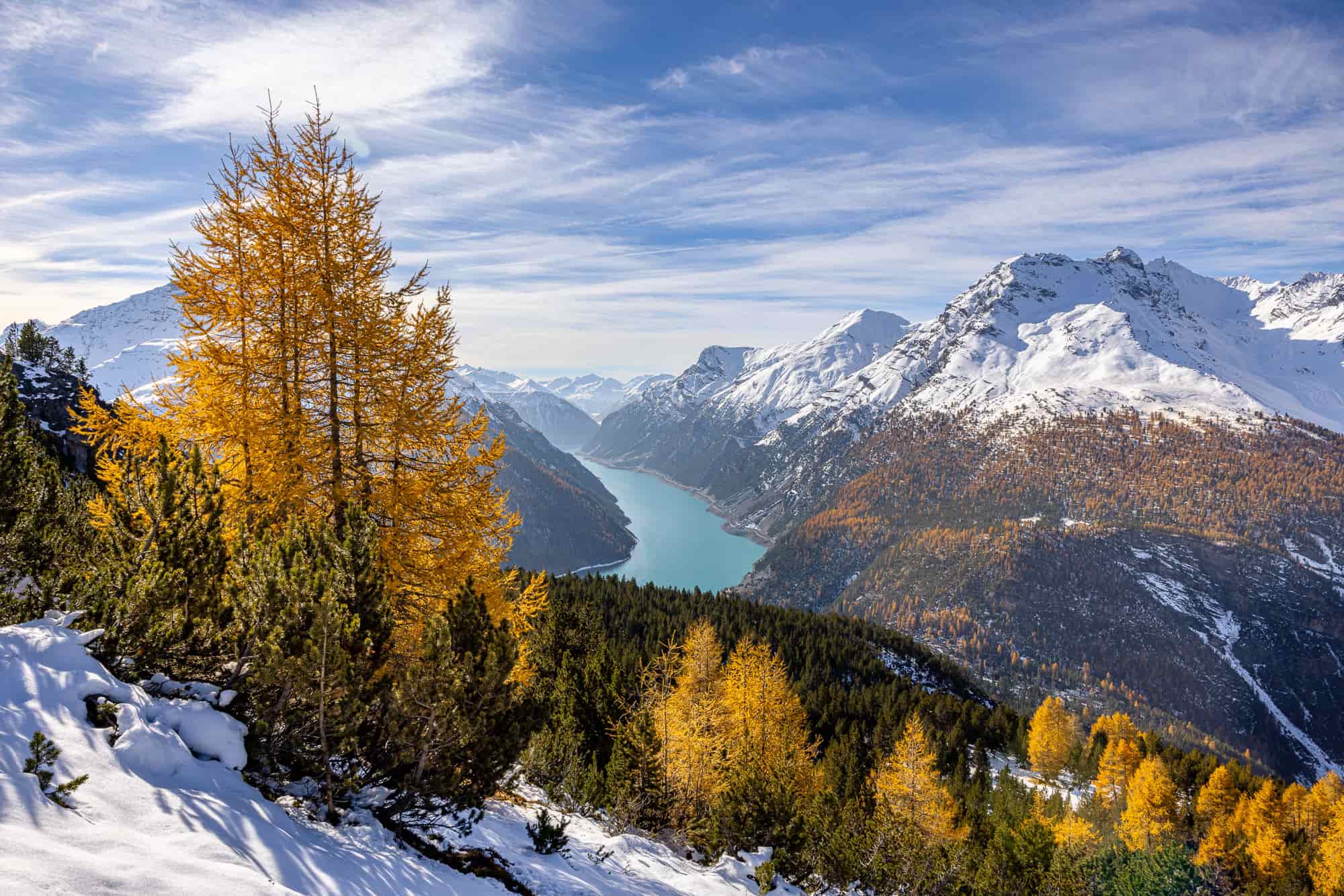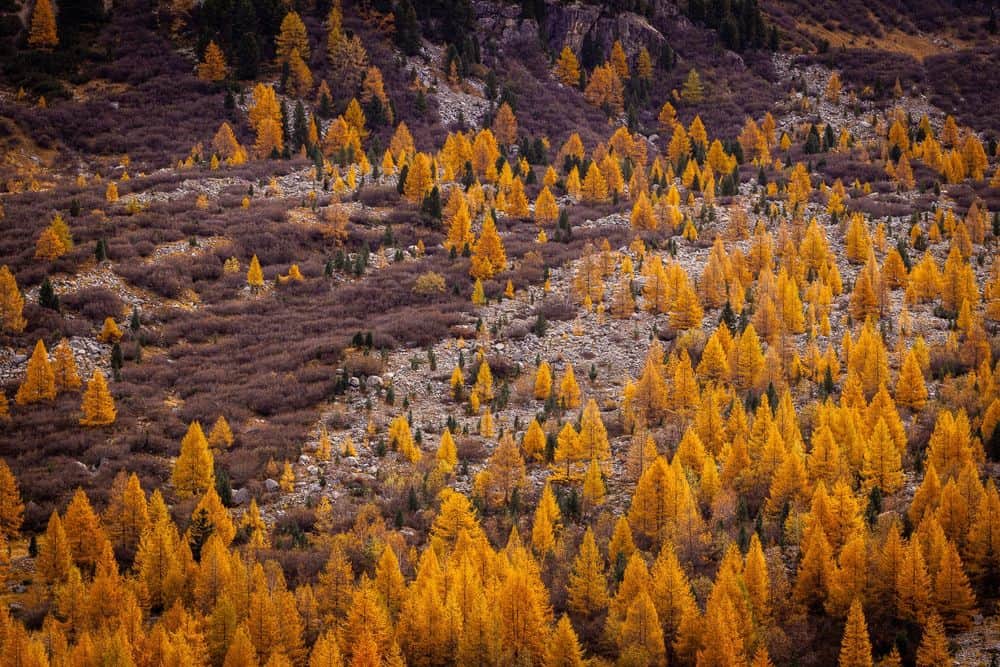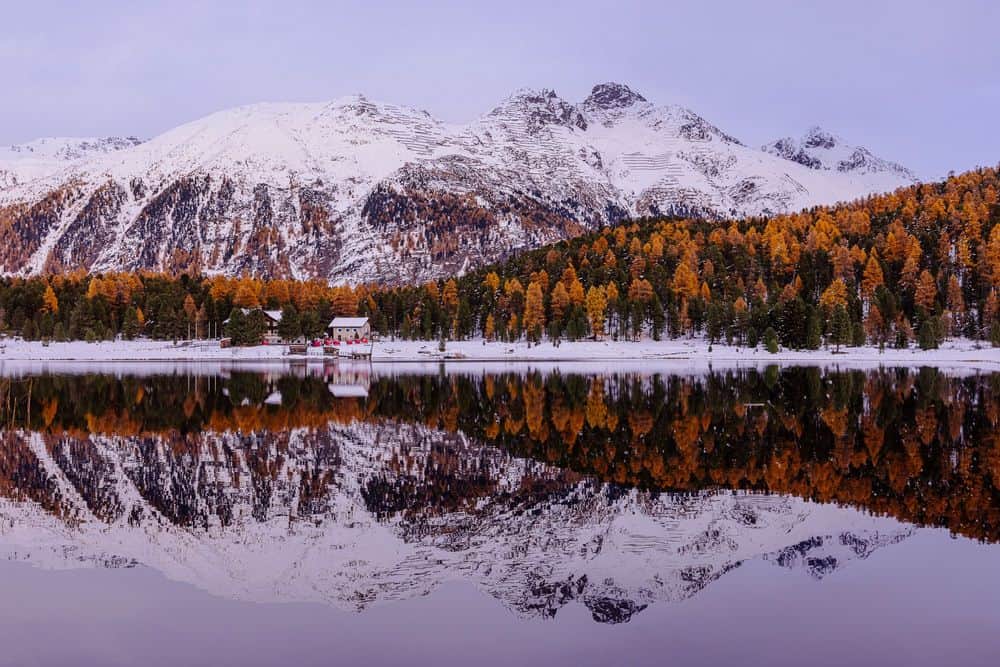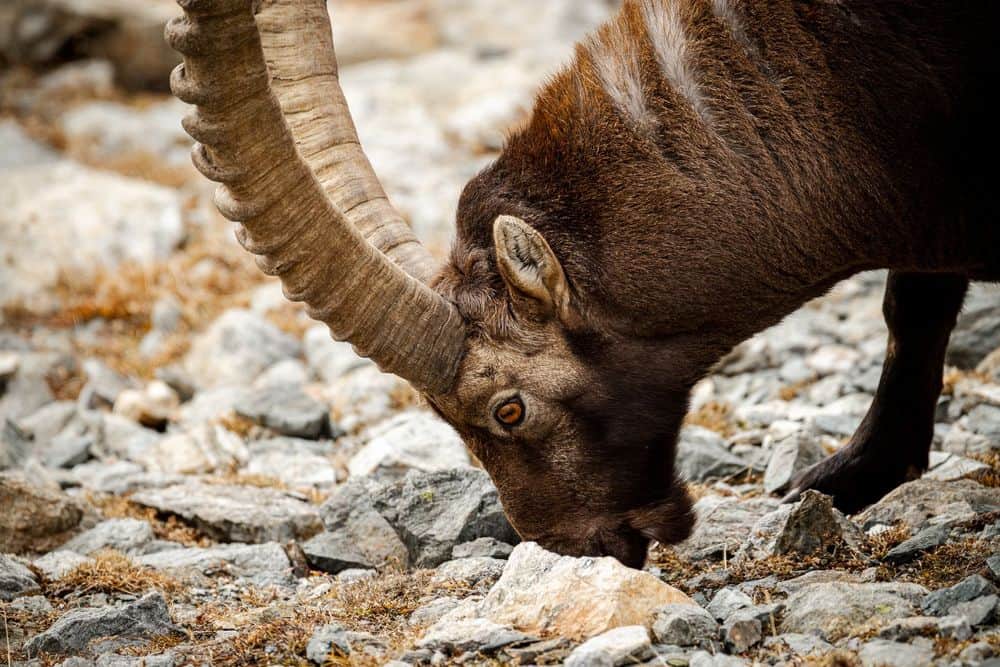Cold days and even colder nights await visitors to the Engadin National Park in late fall. There is already snow at higher altitudes, while the lower ones are dominated by crusty remnants of snow that have melted in the sun and refrozen at night. Every step leaves a crunching sound in the icy silence, which is only interrupted by the occasional murmur of the conifers in the light wind.
In the national park as elsewhere in the Engadin, the larches dominate the landscape - green and inconspicuous in spring and summer, barren and bare in winter. In autumn, however, they unfold their full splendor and bathe the landscape in a yellow-orange light, small splashes of color that shine out at visitors everywhere. From the vantage point of this picture, the west-facing Lago di Livigno looks almost like a Norwegian fjord - deeply incised and seemingly endless, it winds its way between the mountains. On its northern shore, a narrow road connects the Engadin with the Italian enclave around Livigno, although this connection is only passable in the summer months.
An impressive circular hike leads through the national park up to Munt la Scherra, one of the few peaks in this area that can be reached on the permitted and marked hiking trails. The route offers impressive views of nature that has been untouched for over a hundred years and conveys a sense of what an Alpine region would look like with only minimal human intervention.



